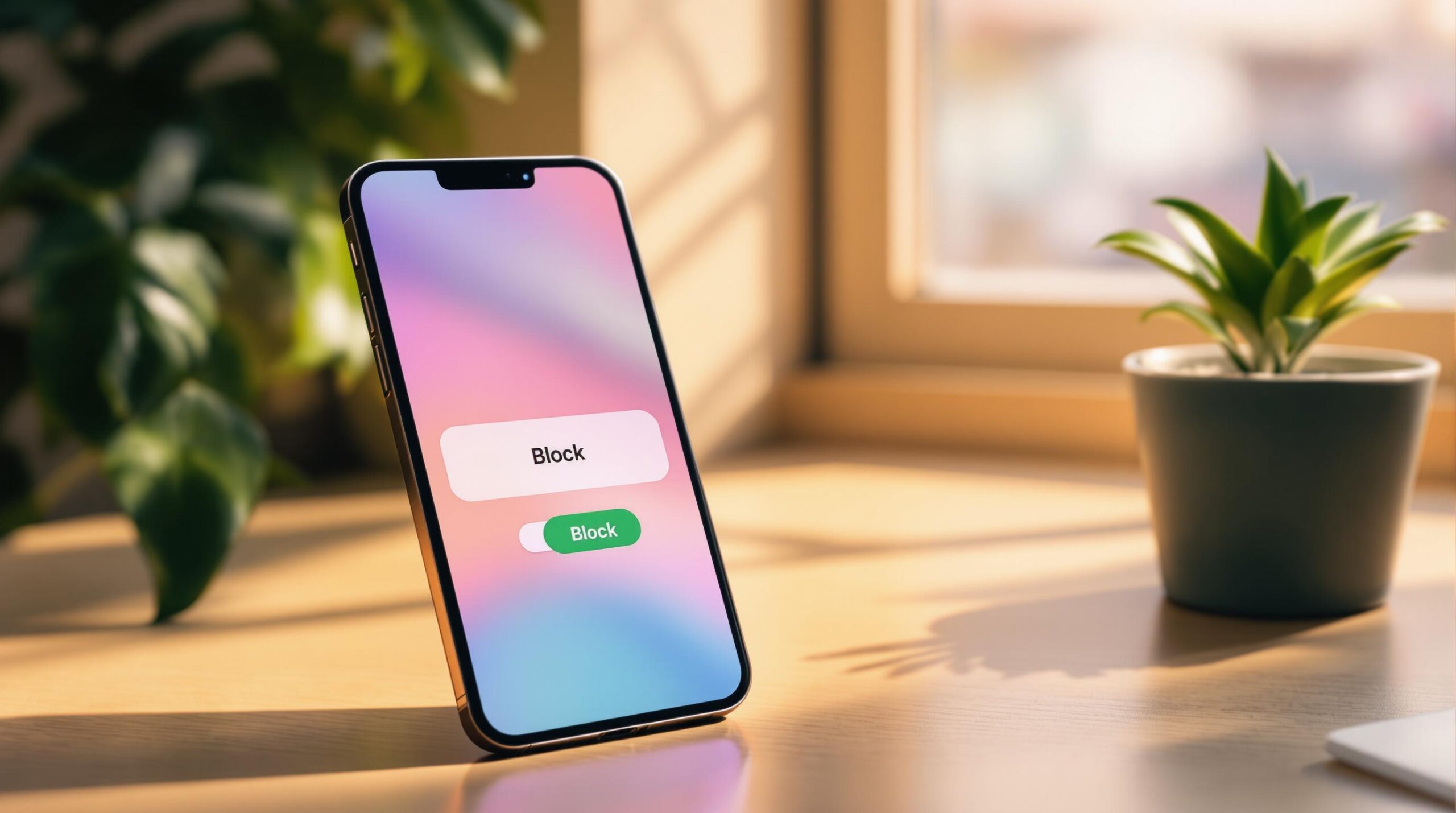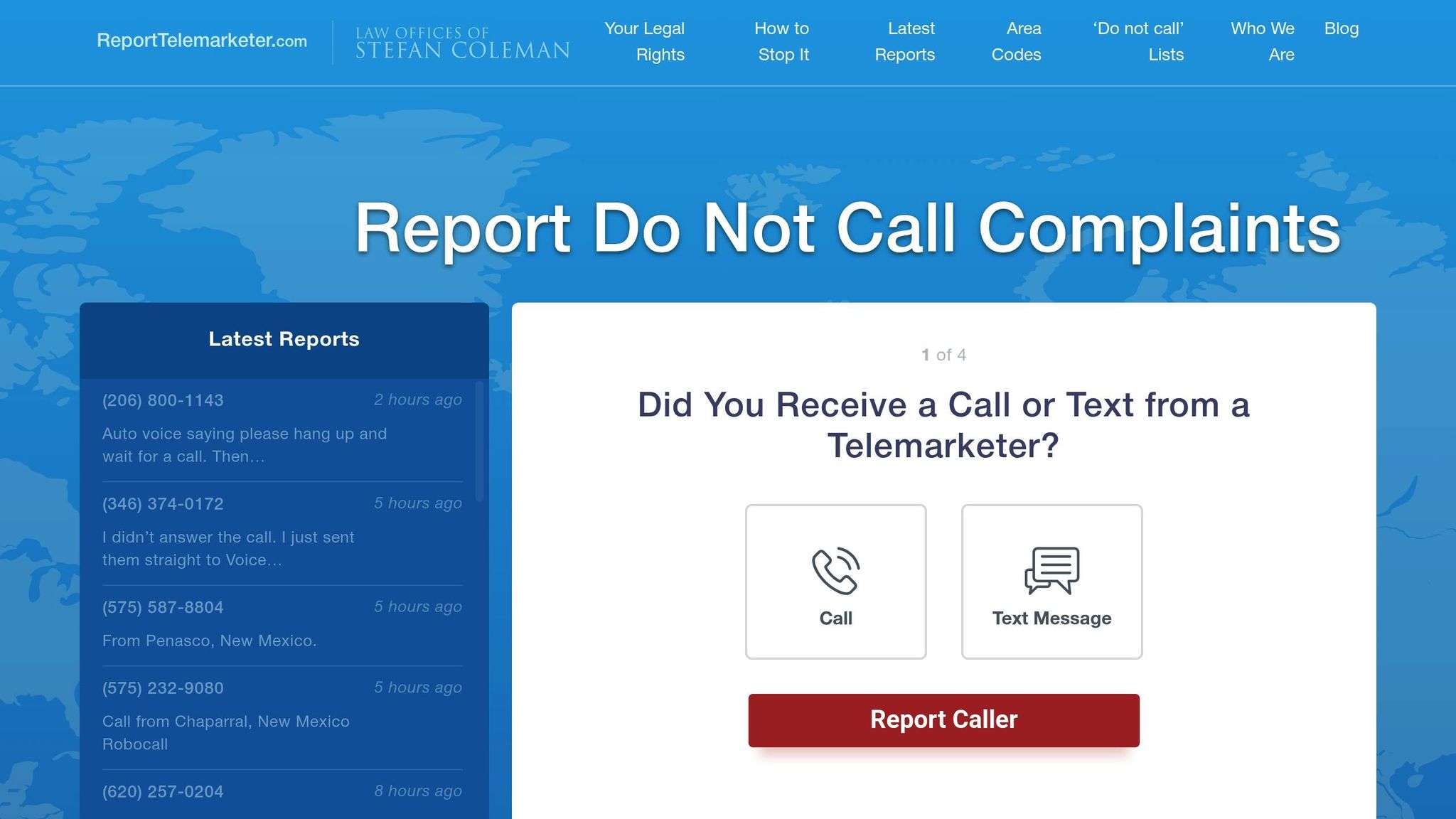
Spam calls and texts are more than just annoying – they waste your time, invade your privacy, and can even put your finances at risk. Here’s how to stop them:
- Use Your Phone’s Built-In Tools:
- On iPhone: Enable Silence Unknown Callers and block specific numbers.
- On Android: Turn on Spam Protection and use features like Call Screen (on Pixel phones).
- Leverage Carrier Tools:
- Verizon, AT&T, and T-Mobile offer free and premium spam-blocking features.
- Try Third-Party Apps:
- Apps like RoboKiller or Hiya offer advanced spam detection and filtering.
- Report Spam:
- File complaints with the FTC, FCC, or use services like ReportTelemarketer.com to recover up to $500 per illegal call.
- Prevent Future Spam:
- Join the Do Not Call Registry, keep your phone number private, and avoid sharing it unnecessarily.
No single method works perfectly, but combining these strategies can significantly reduce spam. Read on for detailed steps and tools to take back control of your phone.
Stop Spam Texts and Calls: Ultimate Protection Guide
Phone Settings to Block Spam
Your smartphone has built-in tools that can help you block unwanted calls and texts. Here’s how to use these features on different platforms.
iPhone Spam Blocking Steps
Apple’s iOS makes it simple to block spam calls and texts. One of the most effective features is Silence Unknown Callers, introduced in iOS 13. Here’s how to set it up:
- Silence Unknown Callers
Go to Settings > Phone, then toggle on Silence Unknown Callers. This sends calls from unknown numbers directly to voicemail. - Block Specific Numbers
Open the Phone app and go to Recents. Tap the (i) icon next to the number you want to block, scroll down, and select Block this Caller.
For filtering unknown text senders:
Go to Settings > Messages and enable Filter Unknown Senders.
Android Spam Blocking Steps
Spam protection on Android devices varies slightly depending on the manufacturer, but most modern phones include Google’s spam-blocking tools. Follow these steps:
- Enable Spam Protection
Open the Phone app, go to Settings, and tap Caller ID & spam. Turn on both See caller and spam ID and Filter spam calls. - Use Call Screen (Pixel Phones)
If you have a Pixel phone, open the Phone app, go to Settings, and select Spam and Call Screen. You can configure it to automatically screen suspicious calls.
For additional protection, you can also explore spam-blocking tools offered by your phone carrier.
Phone Carrier Blocking Tools
Major carriers provide extra spam protection through their networks. Here’s a quick comparison of their offerings:
| Carrier | Free Features | Premium Features |
|---|---|---|
| Verizon | Call Filter Basic (spam detection) | Call Filter Plus ($2.99/month) |
| AT&T | ActiveArmor Basic (fraud blocking) | ActiveArmor Premium ($3.99/month) |
| T-Mobile | Scam Shield Basic (scam ID/block) | Scam Shield Premium ($4/month) |
Using your phone’s settings along with carrier tools can provide a strong defense against spam. Don’t forget to report persistent spam to help improve these services.
Third-Party Apps for Better Protection
Third-party apps can add extra layers of security to block unwanted calls and texts more effectively than your device’s built-in spam blockers. By combining these apps with your phone’s native tools, you can create a stronger defense against spam.
Best Spam Blocking Apps
The leading third-party apps use a mix of strategies to keep spam at bay, including:
- Call Authentication: Verifies caller identities using spam databases and flags suspicious activity.
- Message Analysis: Scans texts for spam-related keywords or suspicious links.
- Community Protection: Relies on shared user reports to identify and block new spam sources.
Pros and Cons of Using These Apps
While your phone’s built-in features handle basic spam filtering, third-party apps go a step further with specialized tools. However, they come with their own set of trade-offs.
Pros:
- Advanced spam detection and filtering options.
- Frequent updates to address new spam tactics.
- Detailed insights into calls and messages.
- Community-driven databases that quickly adapt to new threats.
Cons:
- Some apps may require a subscription.
- They might drain your battery faster.
- Privacy concerns – check permissions carefully.
- Risk of accidentally filtering legitimate calls or messages.
Try starting with the free versions to see how they perform. Adjust privacy settings as needed and pair these apps with your phone’s built-in features and carrier tools for the best results.
sbb-itb-a8d93e1
Your Rights and How to Report Spam
U.S. Laws Against Spam
The Telephone Consumer Protection Act (TCPA) is a federal law designed to protect you from unwanted calls and texts. Under this law, telemarketers are not allowed to:
- Call before 8 AM or after 9 PM in your local time zone
- Use automated dialers without your prior consent
- Send text messages without your explicit permission
- Keep contacting you after you’ve told them to stop
If telemarketers break these rules, they can face penalties ranging from $500 to $1,500 per call or text.
How to Report to Government Agencies
If you’re dealing with unwanted calls or texts, there are several official ways to report them:
- Federal Trade Commission (FTC): File a complaint at donotcall.gov.
- Federal Communications Commission (FCC): Report issues through their consumer complaint center.
- Your State Attorney General: Contact your state’s consumer protection office for persistent offenders.
When reporting, make sure to keep detailed records, including:
- The date and time of the unwanted call or text
- The phone number used
- Any company names mentioned
- Notes on any interaction with representatives
For a quicker option, you can also use ReportTelemarketer.com to take action.
Using ReportTelemarketer.com

While government agencies provide one path, ReportTelemarketer.com offers a simpler and more direct way to deal with spam. This platform investigates reports and takes legal action on your behalf.
1. How They Investigate
The service uses advanced tools to trace the telemarketers behind the unwanted calls or texts. Their legal team reviews the situation to see if any consumer protection laws were broken.
2. Legal Actions They Take
If violations are found, ReportTelemarketer.com steps in by sending cease and desist letters, filing complaints, or pursuing other legal measures to stop the spam.
3. No Cost to You
This service is completely free for consumers. Instead of charging you, they recover their attorney fees directly from the telemarketers once they’ve taken action.
To make the most of this service:
- Provide detailed information about the spam calls or texts you’ve received.
- Share any relevant details about the telemarketer, such as their name or company.
- Document any requests you’ve made to stop the communication.
This approach ensures your rights are upheld while addressing the issue of unwanted calls and texts effectively.
Ways to Prevent Spam
Take steps to stop spam before it reaches you. Here are some practical ways to cut down on those annoying calls and texts.
Join the Do Not Call Registry
The National Do Not Call Registry, managed by the Federal Trade Commission (FTC), is a free tool to help reduce telemarketing calls. While it’s not a perfect fix, it adds an extra layer of defense.
To add your number:
- Visit donotcall.gov
- Call 1-888-382-1222 from the phone you want to register
After registering, most telemarketers are required to stop calling within 31 days. However, this won’t block:
- Political calls
- Charitable donation requests
- Calls from companies you’ve recently interacted with
- Survey-related calls
To strengthen your privacy, consider limiting who has access to your number.
Keep Your Phone Number Private
Being cautious with your number can help reduce spam.
- Use Temporary Numbers: Use temporary or disposable numbers when filling out online forms.
- Be Selective When Sharing: Keep personal and business numbers separate, review privacy policies, and opt out of marketing consents when possible.
- Rely on Email: Use email instead of your phone number for non-essential services.
- Protect Your Online Presence: Remove your number from social media, adjust privacy settings on professional profiles, and request removal from online directories. Avoid posting your number publicly.
These small steps can make a big difference in keeping spam at bay.
Conclusion: Stop Spam for Good
Tackle spam effectively with a mix of tools and strategies. By using your phone’s built-in features alongside proactive measures, you can cut down on unwanted communications.
Here’s a three-part approach:
- Phone Settings: Turn on your phone’s spam blocking tools and enable filters for unknown callers. These features act as your first line of defense.
- Legal Tools: Add your number to the National Do Not Call Registry and report violations. This helps crack down on illegal telemarketers.
- Professional Support: For persistent issues, services like ReportTelemarketer.com can investigate spam numbers and even send cease-and-desist letters or file complaints.
Stay mindful of where you share your phone number and regularly update your blocking settings. While no method can stop every spam call, combining these steps provides strong protection against unwanted interruptions.